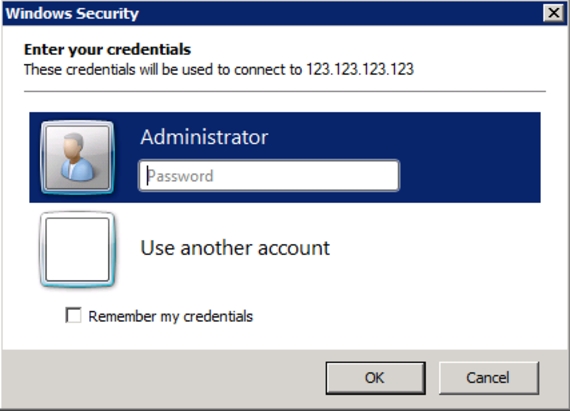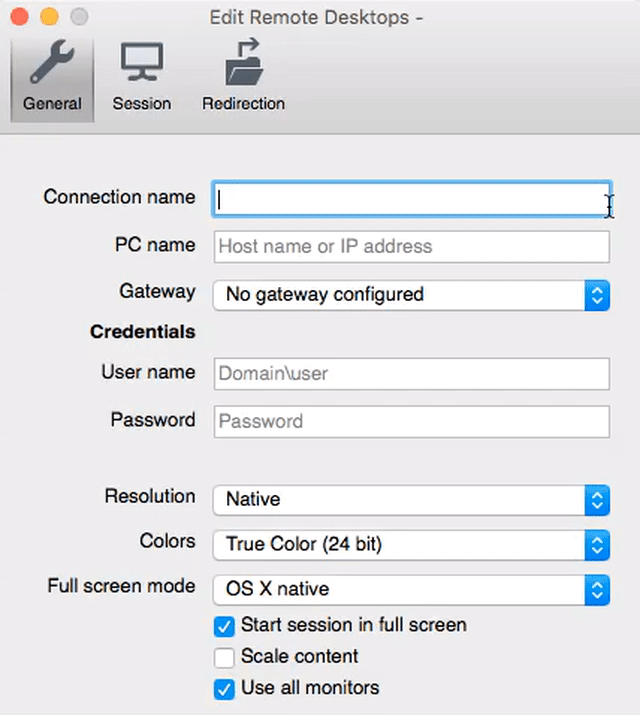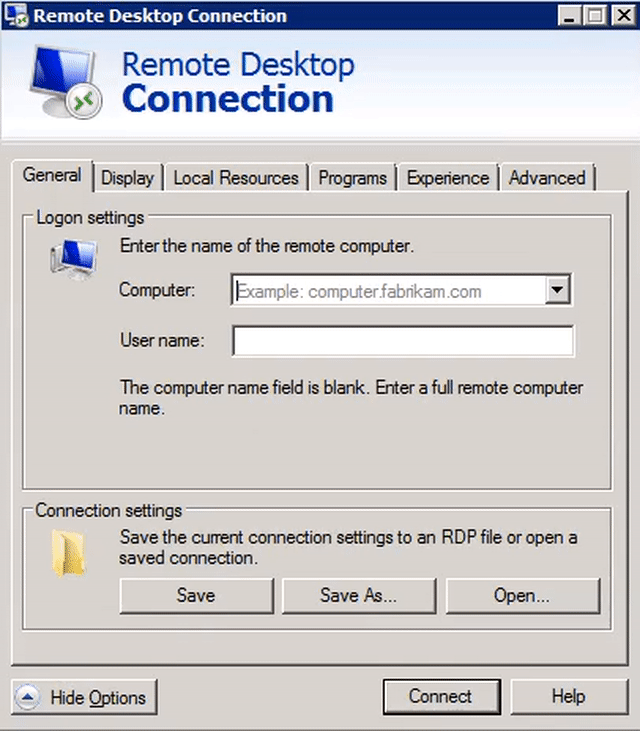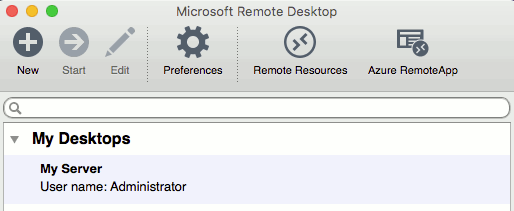
Although you can control the majority of server-level tasks using Plesk, there may be times when you need to remotely log into your Windows server. (If you have a Linux server, you’ll need to use SSH to remotely access your server.)
Regular Windows computers have a keyboard, monitor, and mouse that allow you to interact with the machine. For Windows servers hosted on the Internet, things are a bit different because your server could physically be thousands of miles away. To access the desktop of an Internet-hosted server, Microsoft created Remote Desktop Protocol (RDP).
Every Windows server at Liquid Web is set up to allow Remote Desktop connections. When you log in to your server using RDP, you’ll see a desktop interface very similar to your regular computer desktop. You can complete any necessary server-level tasks from the familiarity of your home computer.
Using RDP
To log into your server with RDP, you’ll need three things: your server’s IP address, your RDP username, and your administrator password.
If you don’t know your server’s IP address, you can find it in your Liquid Web account:
- Log into your Liquid Web account.
- The first thing you will see is your Server Overview.
- Under Your Hosting Infrastructure, you will see a list of all your servers. One of the main fields will be Primary IP. These are your server IP addresses.
Your RDP username is always “Administrator” (this is case sensitive).
Your administrator password is generally the password you use to log into Plesk with the username “admin” (although the administrator account and admin accounts can use different passwords).
Now that you have all the information you need to log in with RDP, you’re ready to get started!
- Remote Desktop from a Windows Computer
- Remote Desktop from a Linux Computer
- Remote Desktop from Mac OSX
Remote Desktop from a Windows Computer
These Windows versions are known to be able to use RDP:
- Microsoft Windows 2000 Clients and Servers
- Microsoft Windows XP Professional
- Microsoft Windows 2003 Server
- Microsoft Windows Vista Ultimate and Business Editions
- Microsoft Windows 2008 Server
- Microsoft Windows 7
- Microsoft Windows 8
- Microsoft Windows 10 and later
- Click on the Start menu icon in your version of Windows. Then, search for “Remote Desktop Connection.” Click to open Remote Desktop Connection.
- Now you’ll tell Remote Desktop Connection to connect to your server.
- Enter your server IP address in the Computer field.
- In the User name field, type “Administrator.”

Click Connect.
A Windows login prompt will appear. Enter your main administrator password and click OK.

- Your server’s desktop interface will load and you can start working on your server.
Older Windows Computers |
|
If you have an older version of Windows you may not have Remote Desktop Connection. Instead, follow these steps:
|
Remote Desktop from a Linux Computer
To RDP into your Windows server from a Linux computer, first you’ll have to install the RDesktop application (if it isn’t installed already). Once you install RDesktop, you can log into your Windows server.
- Open your terminal program.
- The command to launch RDesktop is rdesktop followed by your server’s IP address. In your terminal window, type:
rdesktop 123.123.123.123
(Remember to use your server’s IP address.)
- A Windows login prompt will appear. Log in using “Administrator” as your username and your main administrator password.
- Your server’s desktop interface will load and you can start working on your server.
Remote Desktop from Mac OS X
Every version of Mac OS X requires downloading a remote desktop program. For versions 10.9 and higher, you’ll need to install Microsoft Remote Desktop from the Mac App Store. Once Microsoft Remote Desktop is installed, you can set up your Remote Desktop connection.
- Click New to set up the connection to your server.

- Choose a Connection name for your server. If you have multiple servers, this will help you keep them all organized.
- For User name, use “Administrator.”
- For Password, use your main administrator password.
- Once you’ve entered your credentials, you can close the Edit Remote Desktops window.

- You’ll see the server you just added under My Desktops. Click on the server and then click Start.

Tip: SSL Certificates
If you have a self-signed SSL certificate, you’ll have to accept the certificate’s credentials to connect. Click Continue to accept the certificate and connect to your server. - Your server’s desktop interface will load and you can start working on your server.




